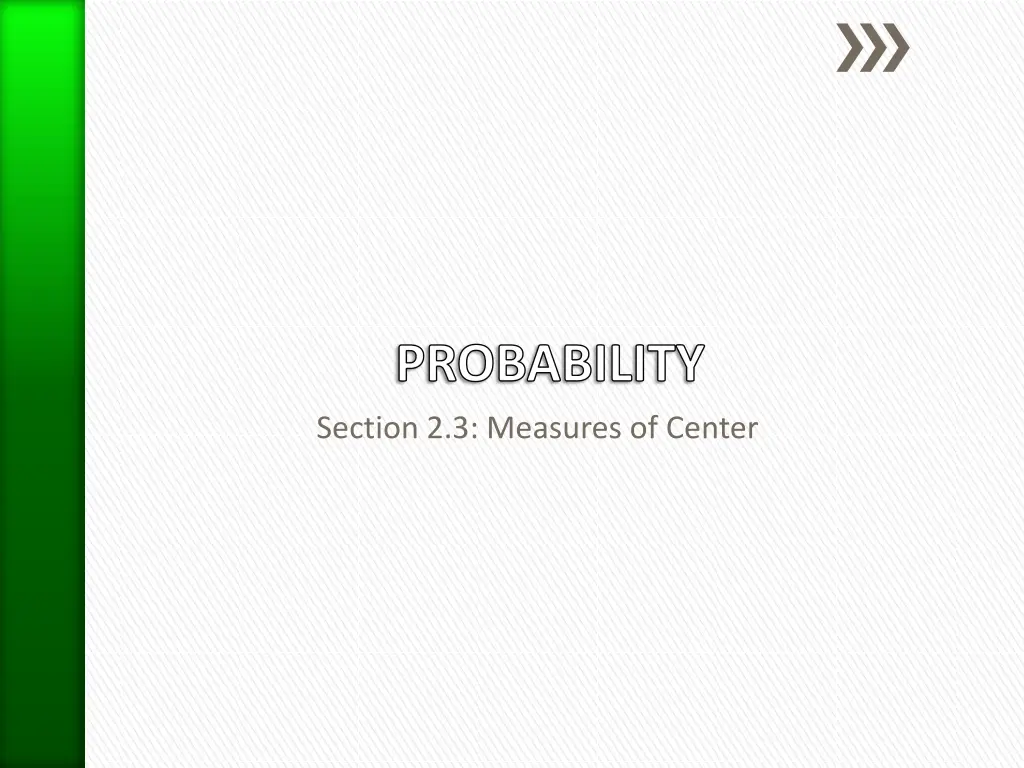
Understanding Measures of Center in Probability
Learn about calculating different measures of center such as mean, median, and mode in probability. Discover when to use each measure based on the distribution shape. Explore concepts like weighted mean and mean of a frequency table.
Download Presentation

Please find below an Image/Link to download the presentation.
The content on the website is provided AS IS for your information and personal use only. It may not be sold, licensed, or shared on other websites without obtaining consent from the author. If you encounter any issues during the download, it is possible that the publisher has removed the file from their server.
You are allowed to download the files provided on this website for personal or commercial use, subject to the condition that they are used lawfully. All files are the property of their respective owners.
The content on the website is provided AS IS for your information and personal use only. It may not be sold, licensed, or shared on other websites without obtaining consent from the author.
E N D
Presentation Transcript
PROBABILITY Section 2.3: Measures of Center
Objective: To be able to calculate different measures of center and to know when it is appropriate to use each one. N = population size Measures of Center: 1. Mean: arithmetic average Given data set ?1,?2,?3, ,??, then ? =?1+?2+ +?? n = sample size 1 ? ?? = ? Where ? is the sample mean. (? = ?????????? ????) Ex. Find the mean of the hours of television watched data set.
2. Median: the middle value of an ordered data set. (M) Order the data in ascending order. Find the ?+1 2observation. If M falls between 2 observations, then you must find the average of those 2 values. Ex. Find the median of the hours of television watched data set.
3. Mode: the observation that occurs most often. If a data set has two modes it is said to be bimodal. Any more than 2 modes and we will say there is no mode. Ex. Find the mode of the hours of television watched data set. Outlier: any observation that is far removed from the other entries in a data set.
?? ? 4. Weighted mean: ? = where w is the weight of each entry. Ex. Calculate your weighted grade in this class.
?? ? 5. Mean of a frequency table: ? = midpoint and f is the frequency. Ex. Find the mean of the frequency table for pulse rates. where x is the class
When is it best to use the mean, median or mode? Use the mean when the distribution is symmetrical. Use the median when the distribution is skewed. Use the mode when we are interested in the highest frequency. Shapes of distributions: 1. Symmetrical: The left side is a mirror image of the right side. 2. Skewed to the left: a majority of observations are on the right side of the distribution and the tail is on the left. 3. Skewed to the right: a majority of observations are on the left side of the distribution and the tail is on the right.


